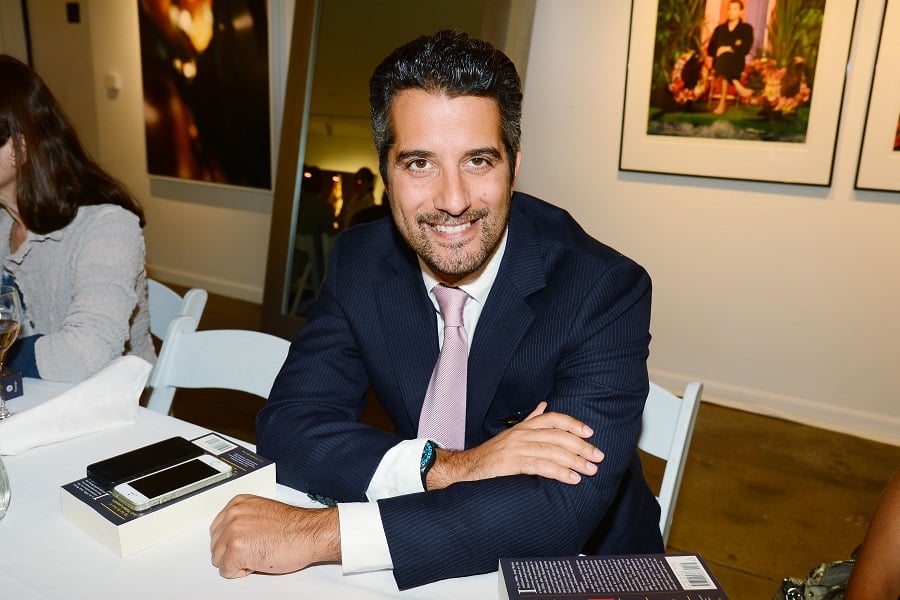
In the winter of 2017, an exhibition of contemporary Iranian art opened at the Aga Khan Museum in Toronto, drawing special attention because it coincided with President Trump’s then-recent travel ban targeting Muslim-majority countries. The show would travel to the Museum of Fine Arts, Houston that same year, playing an important role as cultural ambassador during a time of heightened tensions.
Now the acclaimed show, “Rebel, Jester, Mystic, Poet: Contemporary Persians,” which was comprised of works from the holdings of Iranian-born art collector Mohammed Afkhami, is being revived for its East Coast debut at New York’s Asia Society Museum in October. And again, it will arrive at a time of political turmoil: tensions between the US and Iran are as strained as they’ve been in decades and sanctions have sapped the latter nation’s arts economy.
For Afkhami, this context isn’t an obstacle, but an opportunity.
“I think the timing of the show, coming within a month of the UN meetings, provides a great opportunity to use culture to soften the tone between the two countries,” says the collector. “It’s a non-political way to find common ground. That’s what I think art can do.”
Ali Banisadr, We Haven’t Landed on Earth Yet (2012). © Ali
Banisadr. Courtesy Mohammed Afkhami Foundation.
The exhibition brings together the work of more than 22 Iranian-born artists across three generations, from established names like Shirazeh Houshiary, Shirin Neshat, and Monir Shahroudy Farmanfarmaian, to younger figures like Mahmoud Bakhshi and Ali Banisadr.
It’s underwritten by Afkhami’s foundation, which oversees his personal collection of 600-some works—roughly 450 of which are Iranian—and aims to spread Iranian art at a time when local artists themselves don’t have the means to do so.
SWIFT, the organization that oversees all international financial transactions, has cut off wire transfers to Iranian banks since 2018. This sanction has affected the country’s artists, who often rely on the sale of their work through global channels.
“It makes it very difficult for a foreign-based buyer to support the local Iranian market because there’s just no way to pay,” says Afkhami. “And these people need the money now. They’re starving.”
Parastou Forouhar, Friday (2003). Courtesy of the Mohammed Afkhami Foundation.
Now, the collector is increasing his efforts. He’s in the process of acquiring 50 more works from more than 30 artists, mainly under 40. The group spans numerous styles and disciplines. He plans to double that number within the upcoming months.
The buying spree started last summer when Dastan’s Basement, a central gallery in Tehran, approached Afkhami with an idea.
“They came to me last summer and said, ‘Look, with this tightening of sanctions, some of these artists are going to struggle,’ he recalls. “I said, ‘What can I do?’”
The gallery worked with Afkhami to develop a list of dozens of emerging and under-appreciated veteran artists throughout Iran to, then helped facilitate sales with other galleries and arts organizations.
Khosrow Hassanzadeh, Terrorist: Khosrow (2004). Courtesy of the Mohammed Afkhami Foundation.
Dastan’s efforts are emblematic of the community-first attitude pervasive in the Iranian art world, which continues to grow despite the economic downturn, Afkhami explains.
“This country is suffering under a kind of duress that’s almost impossible to imagine, yet the art world is continuing to grow,” he says. “When I started collecting in 2005, there were maybe half a dozen modern and contemporary art galleries in Tehran. Today, there are over 90, and the number of Iranian artists swelling too.”
“Even when people almost have nothing in their pocket, they’re still willing to shell out a few dollars to buy a work so that an artist has enough money for his paintbrush and his canvas.”
“Rebel, Jester, Mystic, Poet: Contemporary Persians” will be on view October 20, 2020 – January 17, 2021 at the Asia Society Museum in New York.